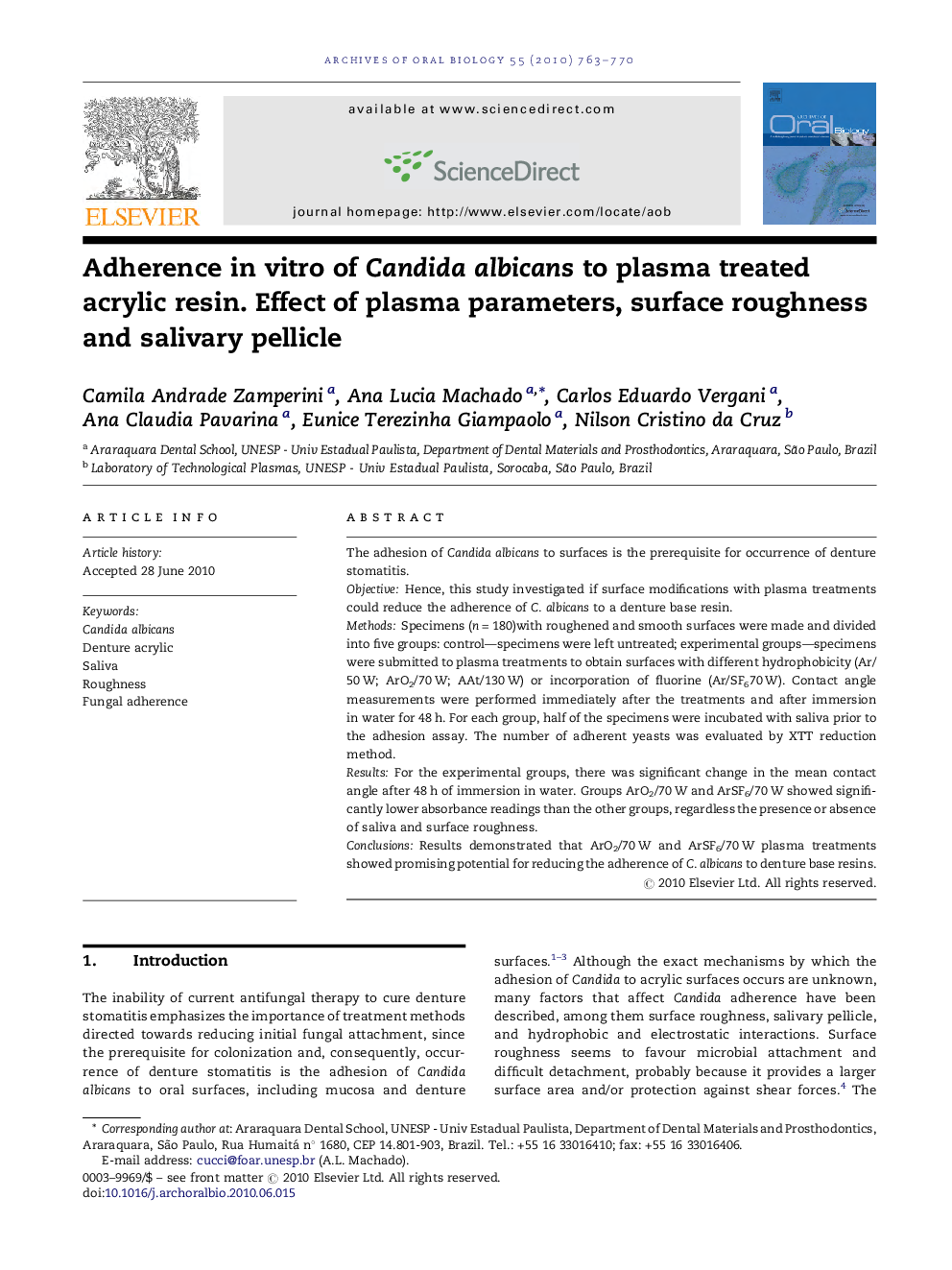| Article ID | Journal | Published Year | Pages | File Type |
|---|---|---|---|---|
| 3121318 | Archives of Oral Biology | 2010 | 8 Pages |
The adhesion of Candida albicans to surfaces is the prerequisite for occurrence of denture stomatitis.ObjectiveHence, this study investigated if surface modifications with plasma treatments could reduce the adherence of C. albicans to a denture base resin.MethodsSpecimens (n = 180) with roughened and smooth surfaces were made and divided into five groups: control—specimens were left untreated; experimental groups—specimens were submitted to plasma treatments to obtain surfaces with different hydrophobicity (Ar/50 W; ArO2/70 W; AAt/130 W) or incorporation of fluorine (Ar/SF670 W). Contact angle measurements were performed immediately after the treatments and after immersion in water for 48 h. For each group, half of the specimens were incubated with saliva prior to the adhesion assay. The number of adherent yeasts was evaluated by XTT reduction method.ResultsFor the experimental groups, there was significant change in the mean contact angle after 48 h of immersion in water. Groups ArO2/70 W and ArSF6/70 W showed significantly lower absorbance readings than the other groups, regardless the presence or absence of saliva and surface roughness.ConclusionsResults demonstrated that ArO2/70 W and ArSF6/70 W plasma treatments showed promising potential for reducing the adherence of C. albicans to denture base resins.
